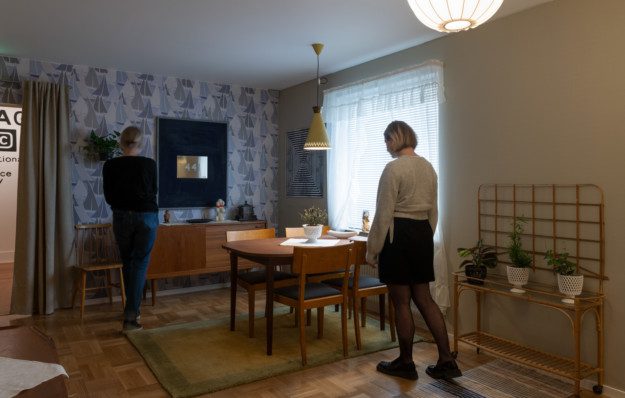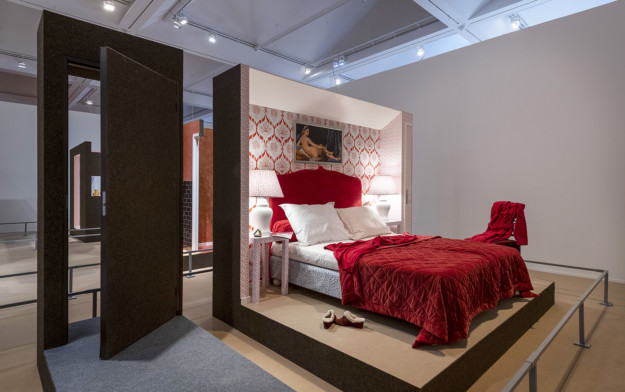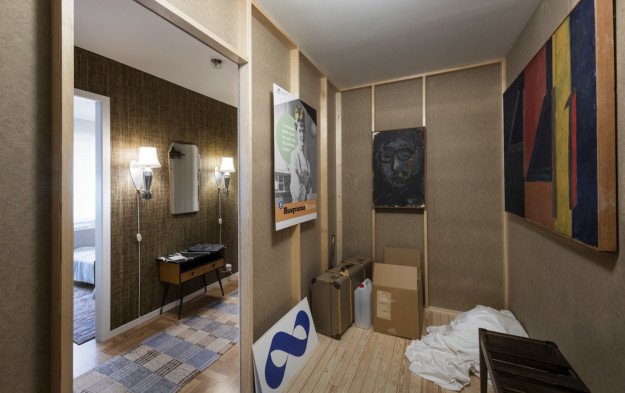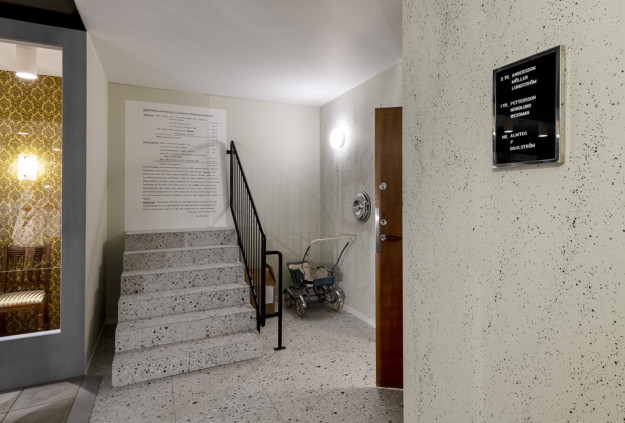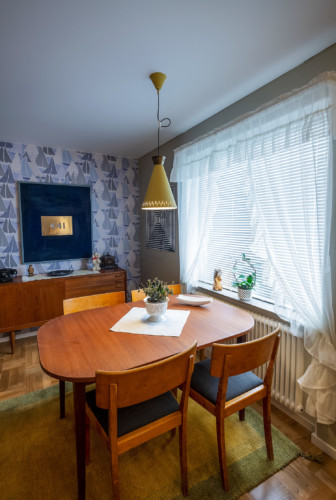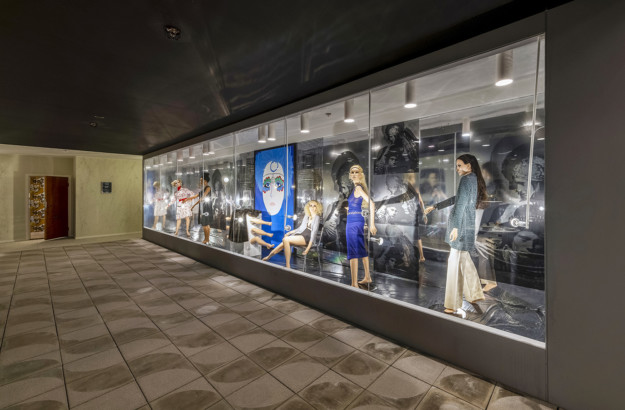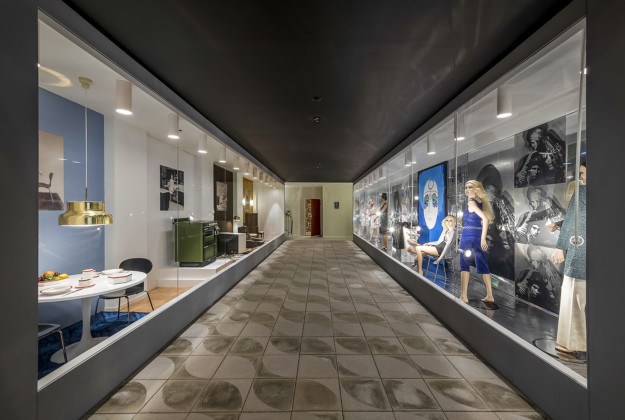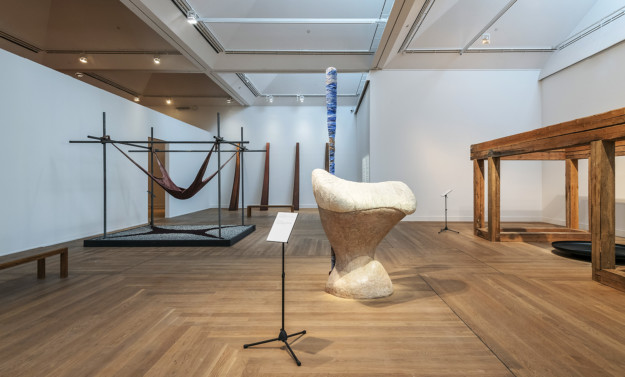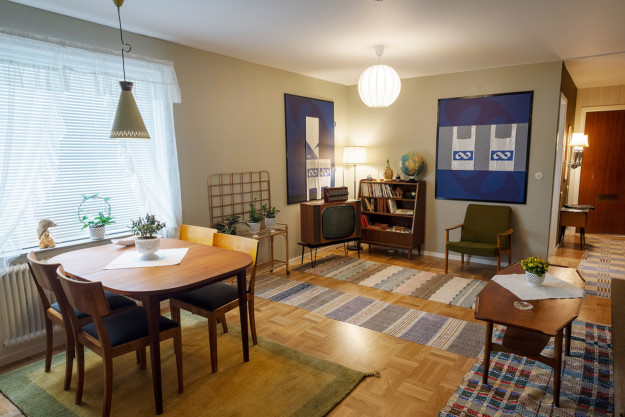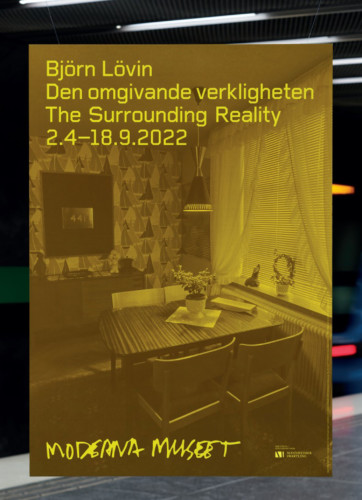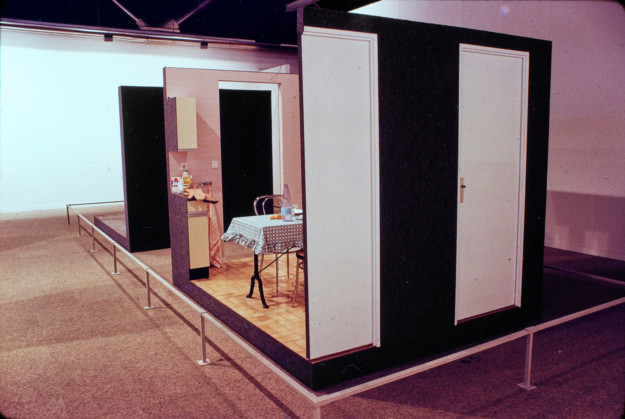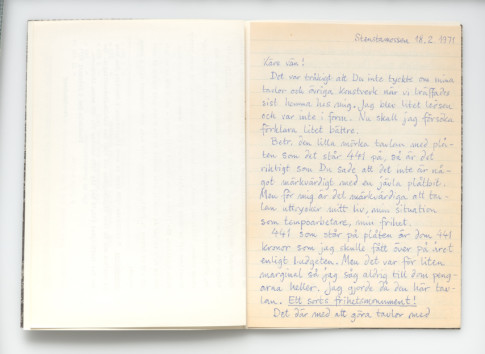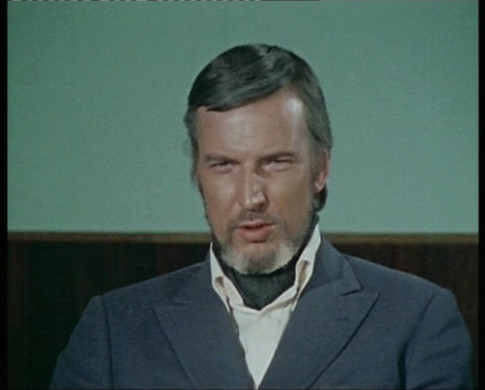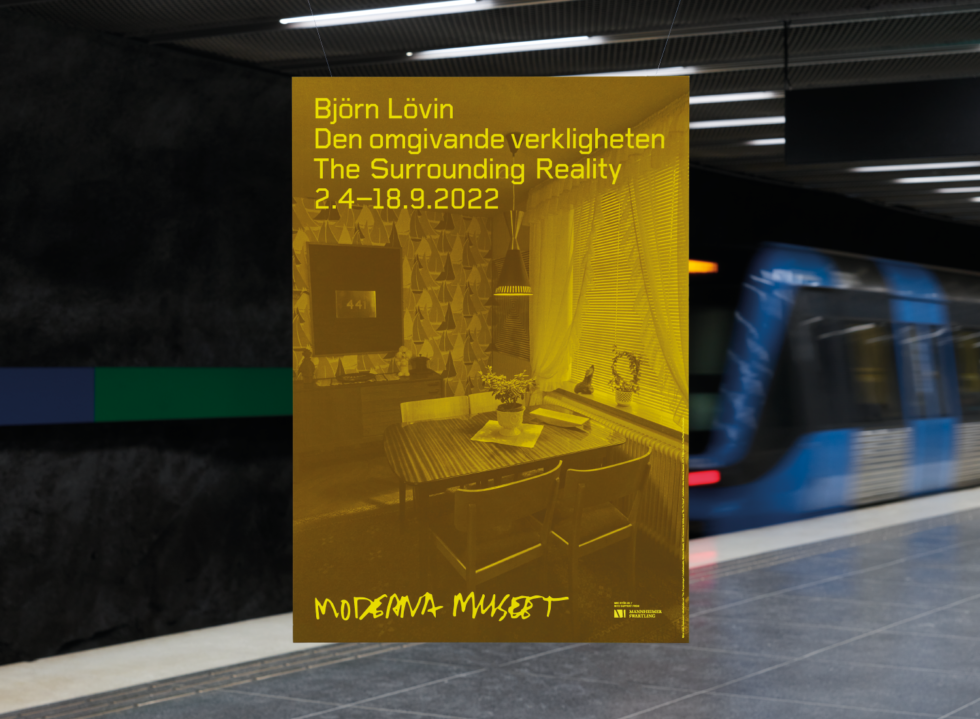
Björn Lövin, Consumer in Infinity and "Mr. P’s Hoard" Installation view, Moderna Museet, 1971 © Björn Lövin Photo: Erik Cornelius
Björn Lövin
The Surrounding Reality
2.4 2022 – 18.9 2022
Stockholm
None of Björn Lövin’s original environments were preserved after being presented in their respective exhibitions in the 1970s and 1980s. The environments you can now see in the exhibition are thus reconstructions interpreting and recreating a similar atmosphere as when the works were first shown.
Extensive and winding research has been required to build up the environments. Based on photographs, films and archive documents, objects have been identified. Read more on the three environments that you encounter in the exhibition here:
Consumer in Infinity and “Mr P’s hoard”, L’image and C – The struggle for reality.
Curator: Matilda Olof-Ors
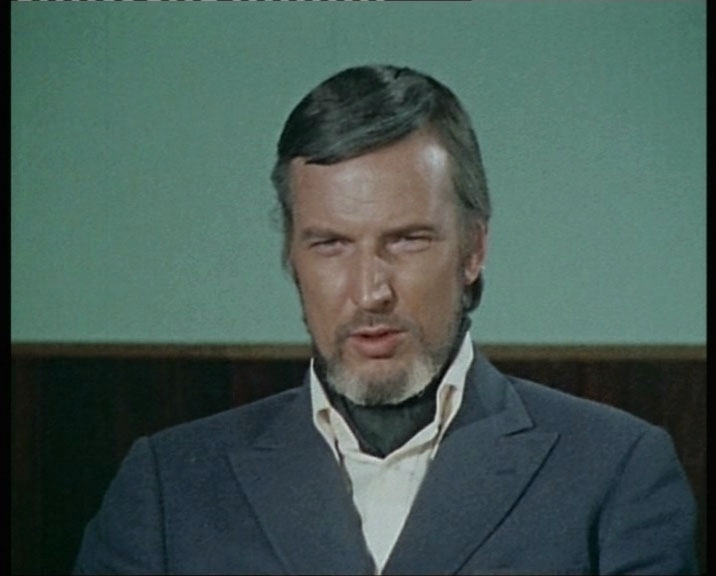
BJÖRN LÖVIN
Björn Lövin expanded traditional art genres and was one of the first Swedish artists in the late 1960s to make spatial installations, called environments at the time.
He was born in Falun in 1937. In his youth Lövin studied in Barcelona, later attending Stockholm University and Uppsala University to study education, scientific theory and information technology.
Despite his lack of formal artistic training, he had his first exhibition at Galleri Mejan in 1970, an early version of the more comprehensive exhibition Consumer in Infinity and “Mr P’s Hoard” – two environments by Björn Lövin that was presented at Moderna Museet the following year.
Read more: Biography
I’m impressed by Björn Lövin’s precision. His environments were as well thought out as they were carried out, which has enabled them to maintain their timeliness. – Håkan Nilsson, Svenska Dagbladet
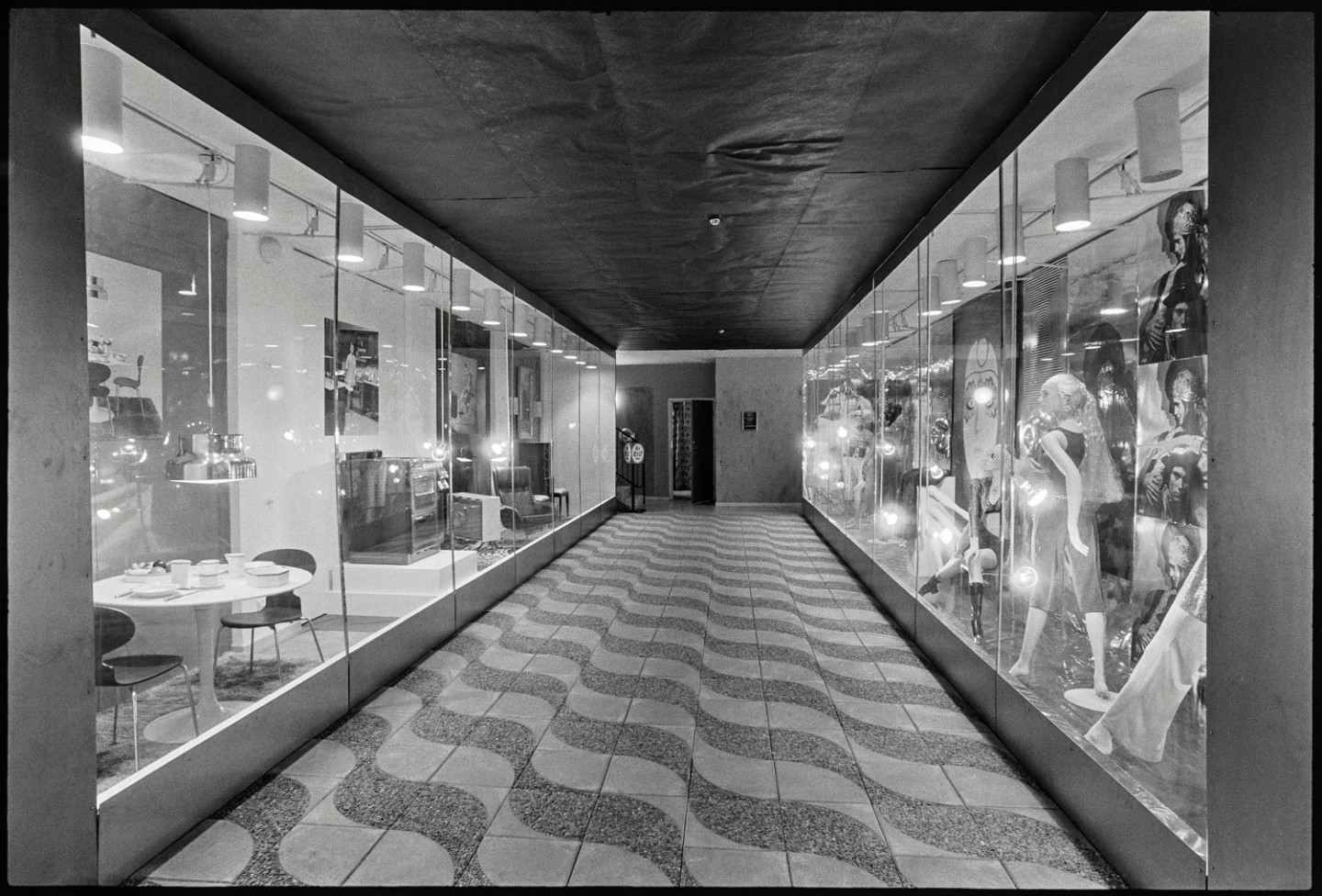
Photo: Erik Cornelius/Moderna Museet
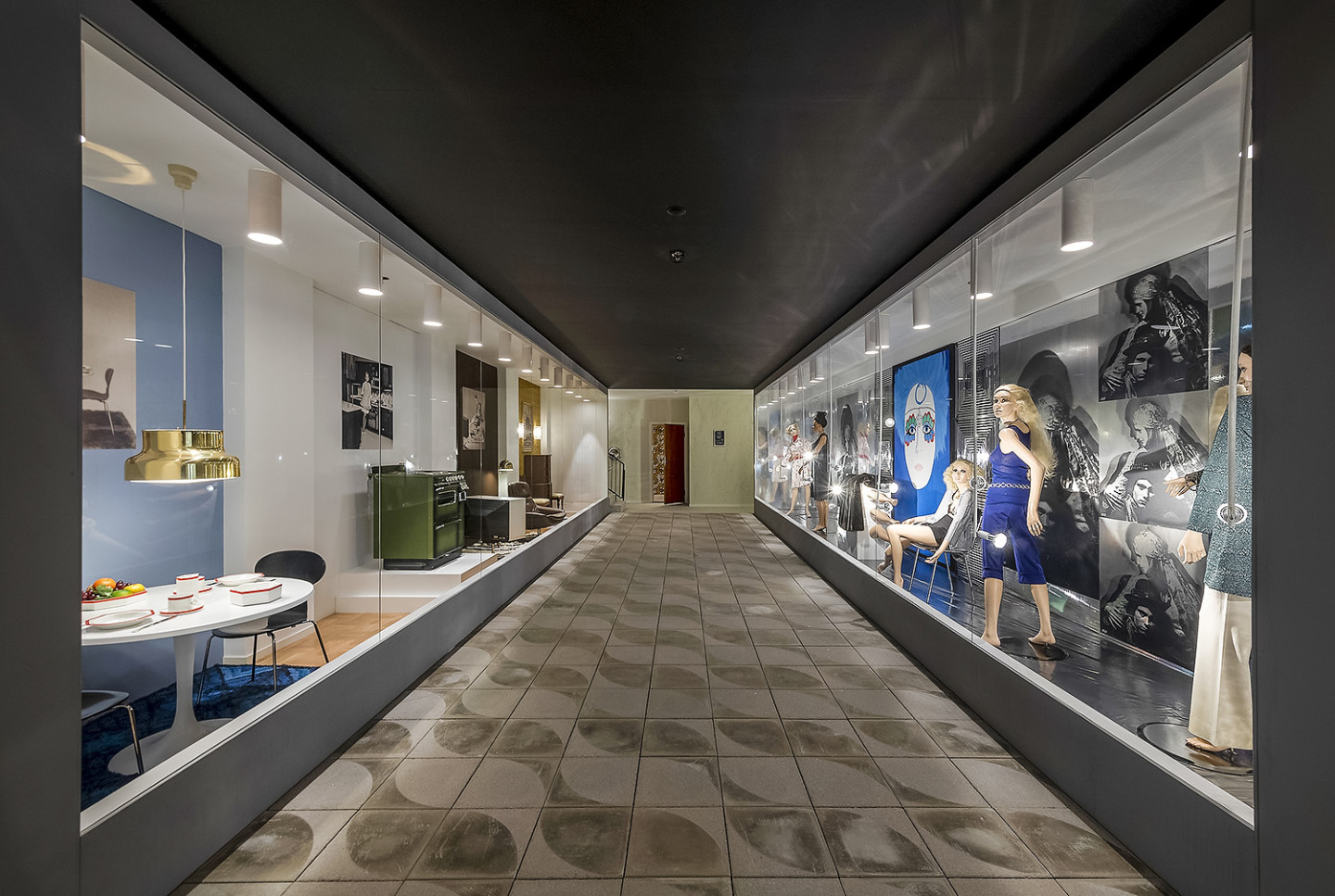
Consumer in Infinity and “Mr P’s hoard”
Consumer in Infinity and “Mr P’s hoard” were created for Björn Lövin’s first museum exhibition at the Moderna Museet in 1971. Here Lövin shows a Swedish low-income earner’s socio-economic reality based on a national low-income report conducted by the State that was appointed in 1965 and which provoked great debate in Sweden.
What did the large differences in wages and quality of life mean for the people behind the statistics?
Step onto the shopping street “Consumer in Infinity”. Behind the glass panes, designer furniture, mannequins, a set of tableware and a 1971 stove model from Husqvarna, Regina, are collected. Everything is presented as in the 1970s department store window to attract consumption.
The apartment – “Mr P’s Hoard”
“Mr P’s Hoard” is a decorated two-room flat.
The tenant is the fictional character Mr P (P for personality) with his wife and two kids.
Björn Lövin asked one of the economists behind the low-income report to calculate how much money was left for holiday, phone, dental treatment, recreation and culture for a low-income earner after the bills were payed.
The total was SEK 441 (approximately SEK 3600 today)
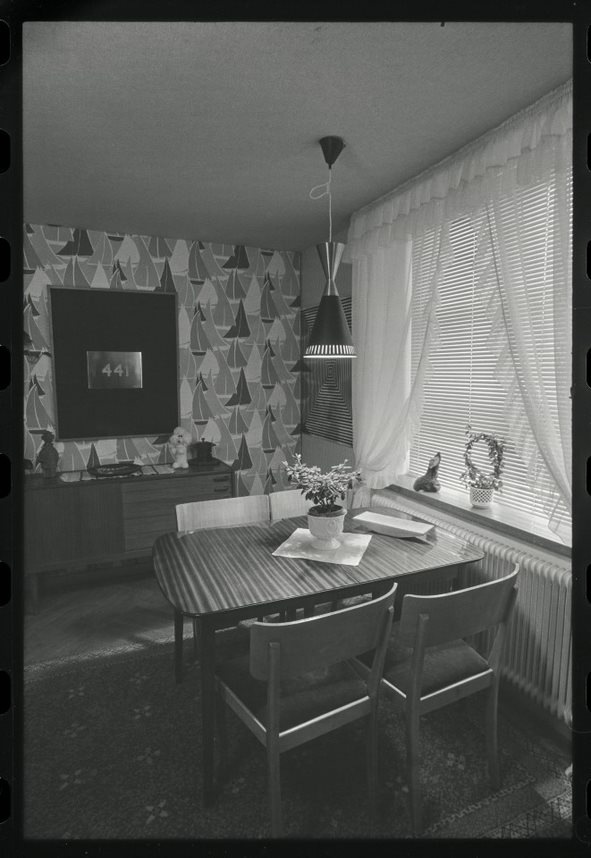
Dear friend, I'm sorry that you didn't like my paintings or my other things when we last met at my place. – Mr P
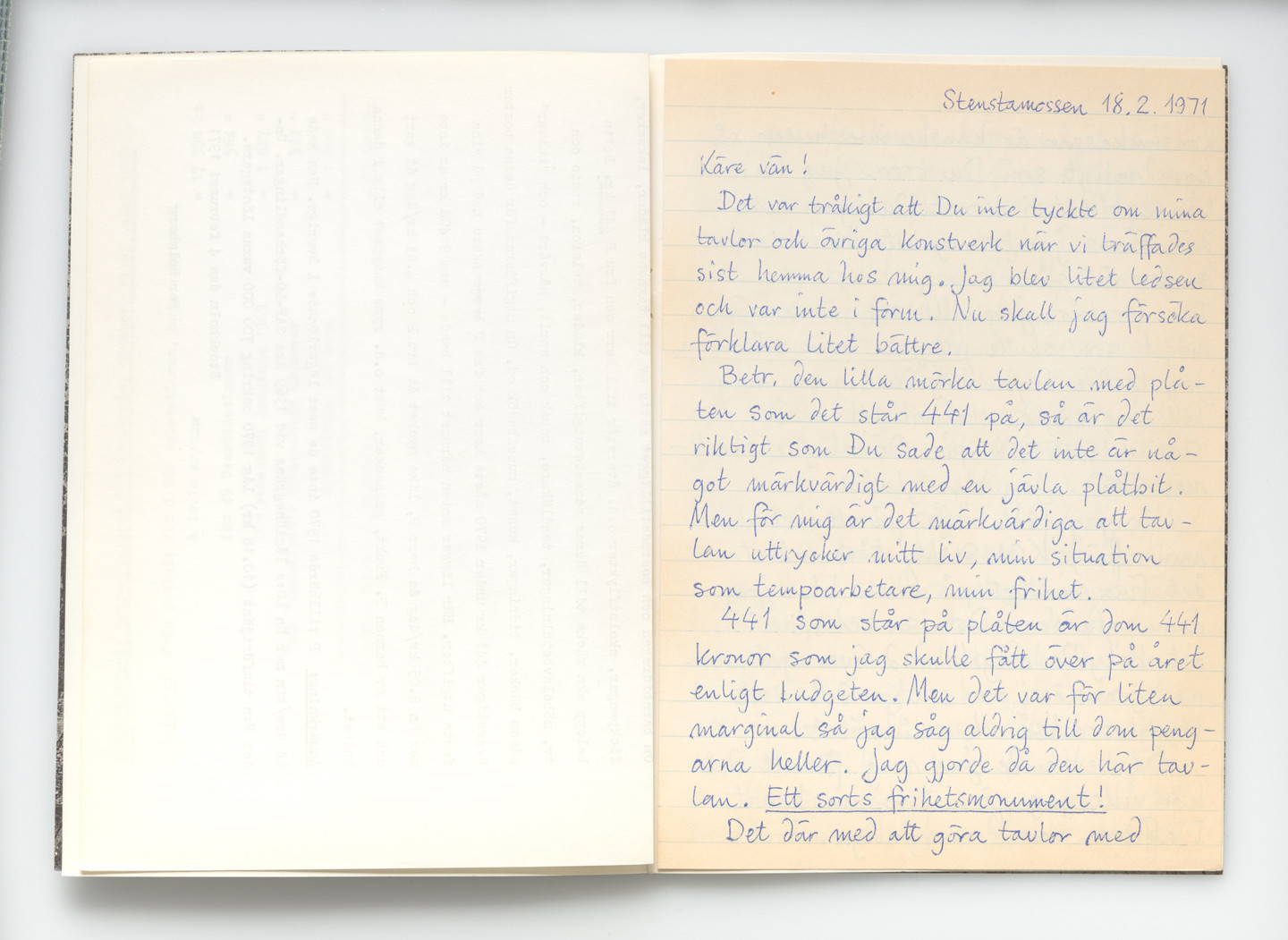
Texts and fictional characters
Not only fictional people, such as Mr. P, but also texts are of great importance in Björn Lövin’s art. The texts can be found in his environments, but also in his exhibition catalogs.
Björn Lövin used his fictional characters and various forms of text to structure and develop the complex content and plot of the environments.
The author is sometimes the artist himself, but at times it is one of his fictional characters.
In the 1971 exhibition catalog, a letter written by Mr. P was inserted between the pages.
Read the letter in its entirety here: Mr P’s letter
A veritable cultural deed – Birgitta Rubin, Dagens Nyheter
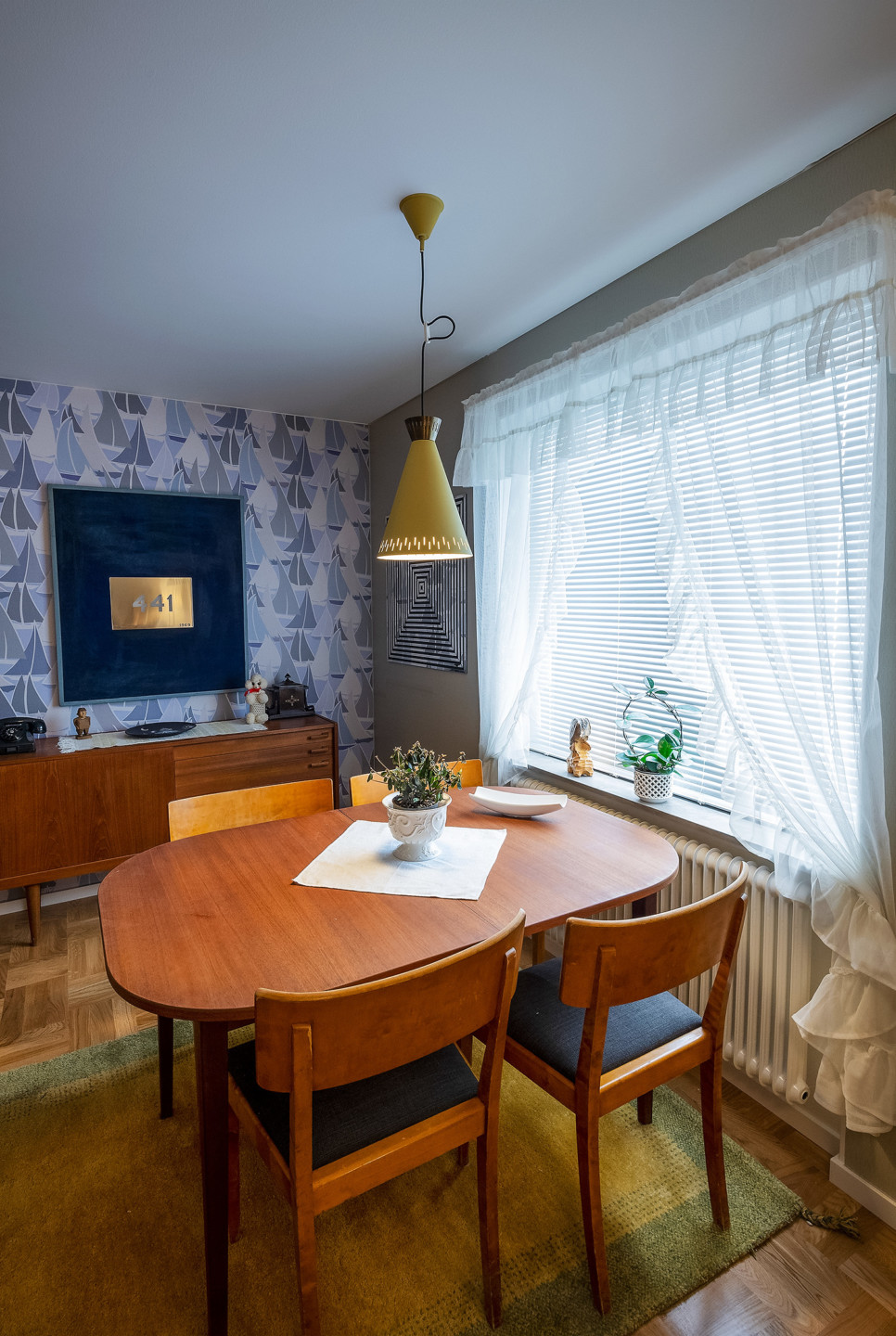
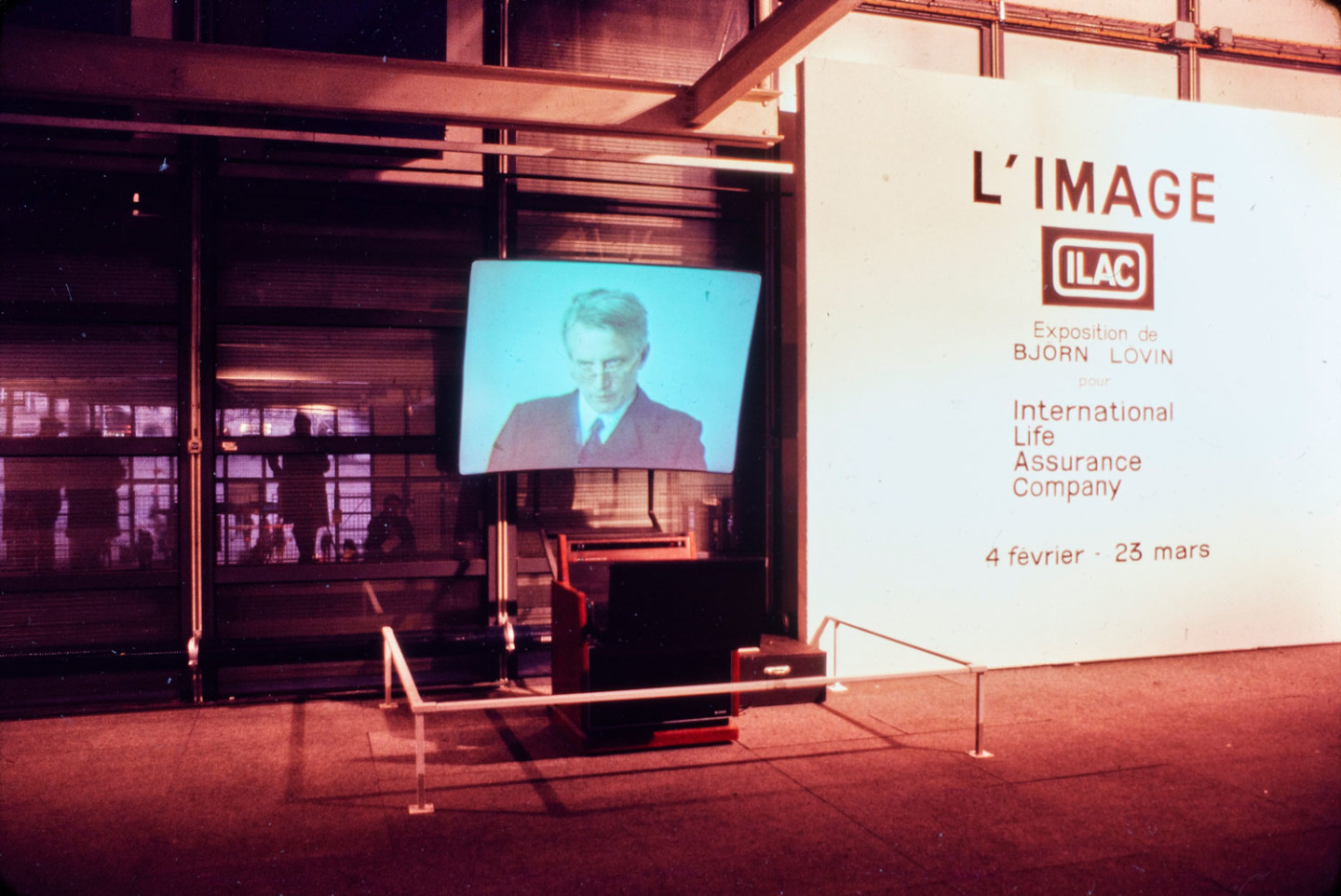
L’IMAGE
L’Image was first shown in 1981 at Centre Pompidou in Paris. In this environment, Lövin explored ideas on happiness and security through the fictional ILAC – International Life Assurance Company.
ILAC divided the population into categories, A for ILAC clients, B for potential clients, and C for those without the means to join.
In the nine points below, Björn Lövin describes what it means to join ILAC:
I. What is ILAC?
ILAC is the biggest insurance company in existence at present. Its basic idea is the principle of inverted risk. According to this principle, a person’s entire life can be insured, if the life values will be formulated in terms of consumer level and social relations. This can be attained in totally administrated societies where these goals can be expressed as the common interest of producers and consumers, united in the ILAC movement.
II. Can you apply to become a member of ILAC?
No. But any person selected by the basic information system – which analyses his fundamental personal characteristics on all levels – is then offered a totally planned future guaranteed by the conditions of the system.
III. And as a selected member?
The common goals can be attained by a suitable planning of the education. As these goals are integrated with investments and long-term industrial planning you have access to a future guaranteed by the system. Its basis is the ILAC level scale.
IV. And by what means?
By means of a mutual contract. By participating in the movement as an active consumer, by expressing and respecting the goals of the consumption levels you create together with other members a force that brings forth the common future of itself. This democratic movement prevents foreign goals from penetrating society’s body and is a guarantor of its health. This silent psychological revolution makes new communication possible.
V. Is this really possible?
Yes. There is proof to demonstrate it. Owing to a powerful, centralized administration and the concentration of forces, now taking place as a result of different interests uniting within the framework of our system, it is possible to secure the future entirely. When the individual’s wishes and life values can be expressed in accordance with the long-term industrial pattern of action almost total security can be obtained.
VI. What does the “inverted risk” mean to the individual?
Unanimity as regards interests that can be realized within the framework of the system facilitates long-term planning of the creative productive forces to the extent that – owing to methods now available – even the individual’s future can be guaranteed within the system. However, to achieve this it is of course essential that the terms of the contract be respected.
VII. What does this contract entail?
That the capabilities analysed by the way of introduction constitute the starting-point of a planned education that satisfies not only the individual’s but the producers’ wish to attain the goals defined. Under this system of association the security of the individual and society can be defined and guaranteed in advance.
VIII. What are the individual’s obligations according to the contract?
He undertakes strictly to respect the principle of initial capabilities and to participate in conflicts of interests by loyally supporting the individual’s right to express his personality within the consumer system. The right of the individual and the security of the family are the traditional bases expressed by means of this new form of association.
IX. Can security then be guaranteed?
Yes, indeed. When you can unite long-term planning of production with the organized demands of the consumers, out of the symbiosis of these two forces new forms of expression are born which demand to be realized.
Just like when visitors entered ILAC at the Centre Pompidou in 1981, you are greeted by six containers in the exhibition today. Three of them show short sequences in which a French family that has been monitored for a week is captured with sound and image in the home. Here we see the children who have just come home and are eating in the kitchen, M and Mme Bernard who are receiving dinner guests, and Mme Bernard looking at herself in the mirror.
Through their ILAC membership, the family is offered a fully insured and predictable life. But is it really a happy and secure existence we see unfolding?
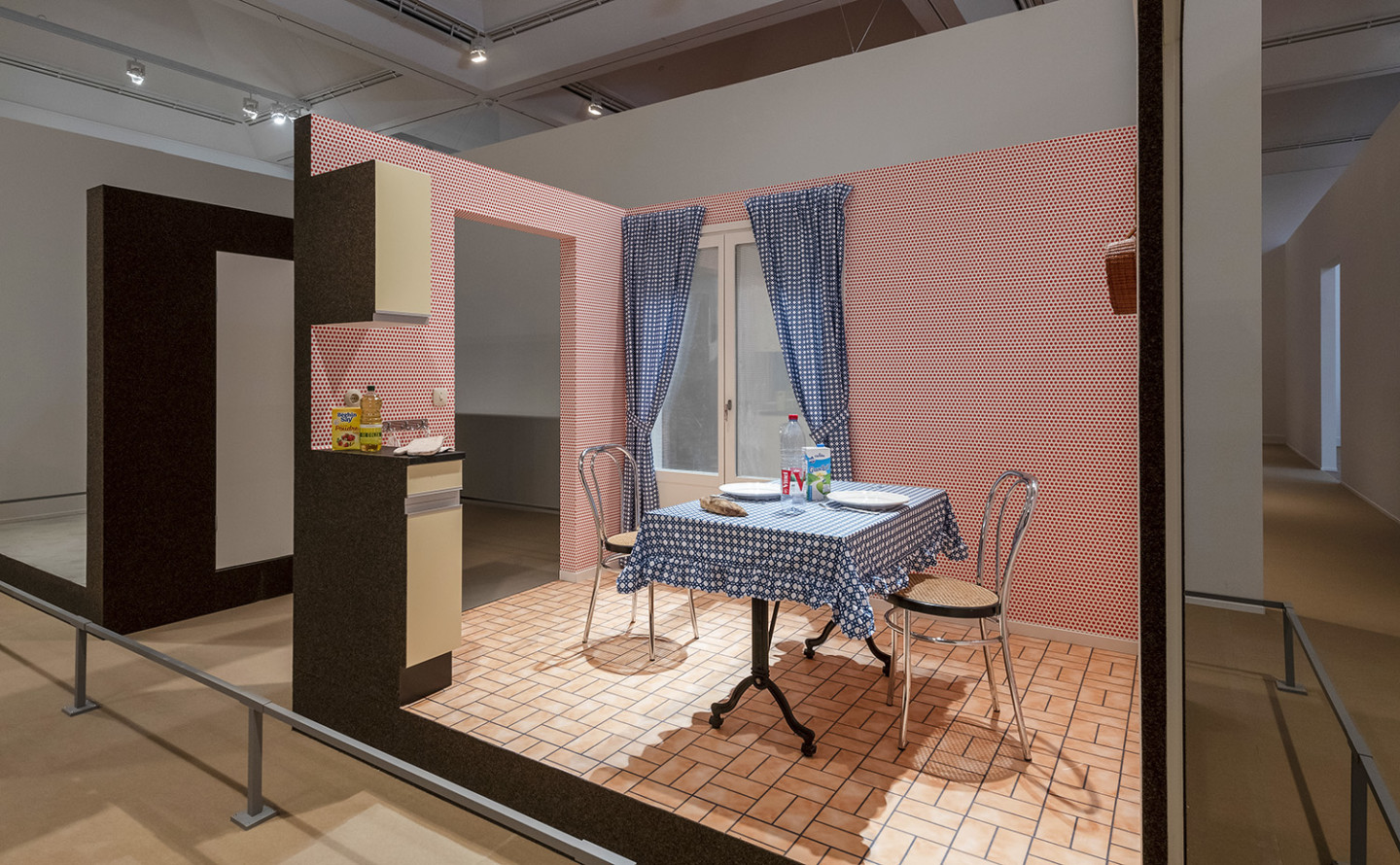
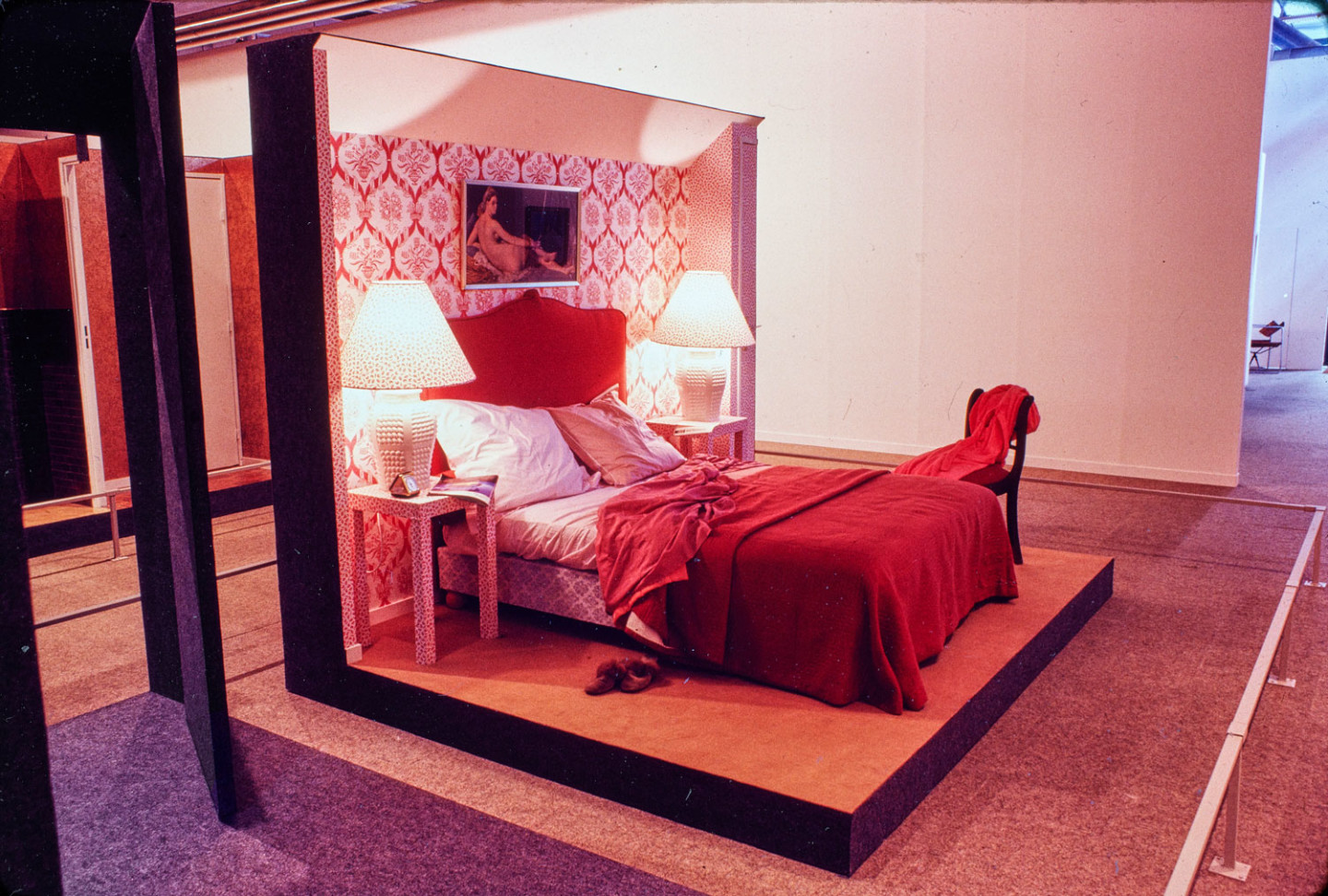
Entering into Lövin’s environments is to be immediately affected, from all sides - it felt as if I was stepping into shafts of new thoughts, new orders, new connections, which I would not have accessed by focusing on the details. – Lars-Erik Hjertström Lappalainen, Kunstkritikk
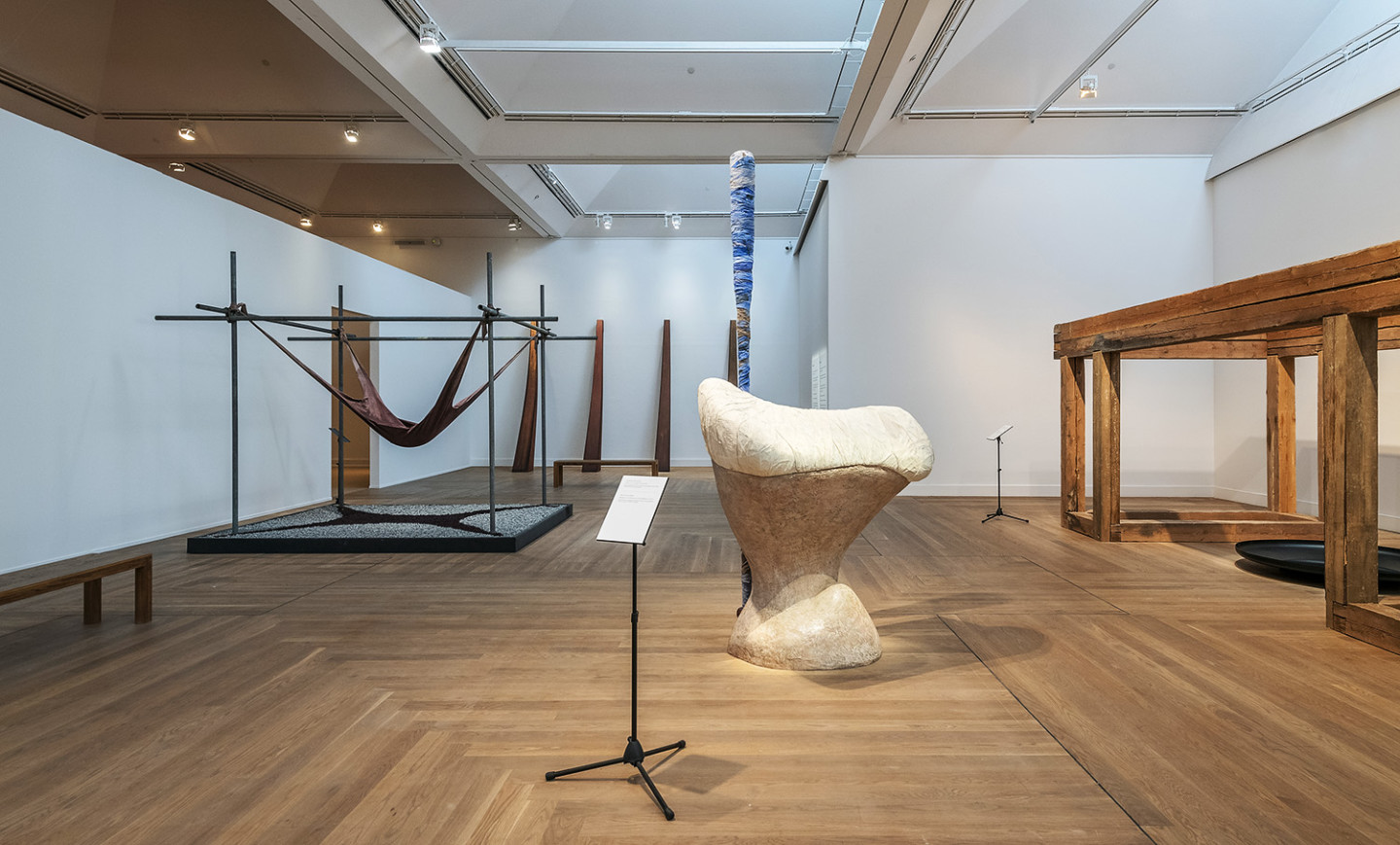
C – The struggle for reality
In 1988, Björn Lövin exhibited objects he called “archaeological finds” from the C culture at Kulturhuset in Stockholm. He also presented texts on the objects’ origin, dating and presumed function.
This is how “The confining father” was presented when the work was shown at Kulturhuset 1988:
THE CONFINING FATHER
Creosoted wood. Measurements: 280 x 120. Original. Stavanger 1983.
Seems to be in direct relation to BROTHER MURDER. The convincing, dominant and limiting father image is also tested in its supposed security. Can he be anyone else?
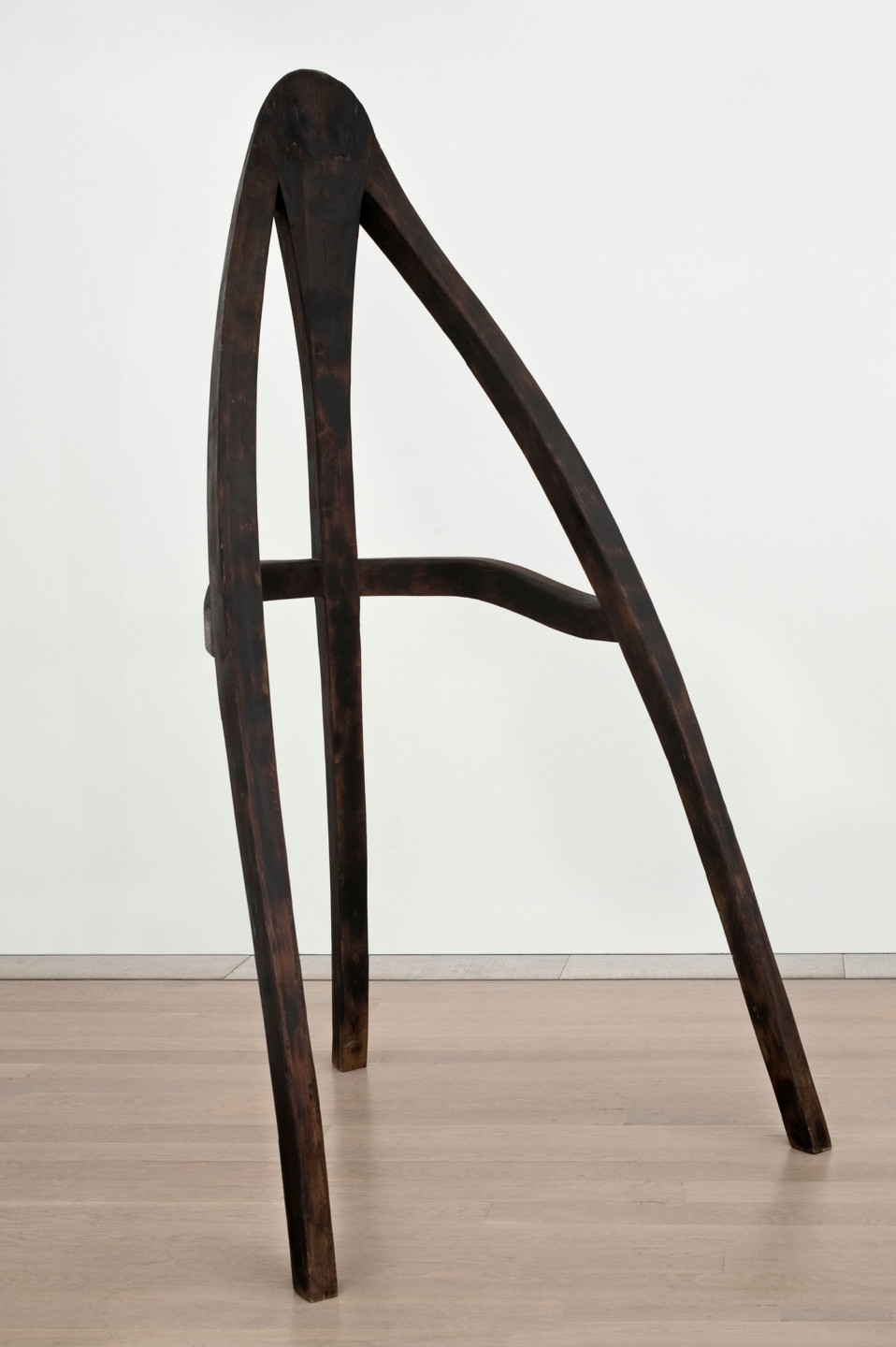
Björn Lövin defined C as people who were left over after the labour market had selected its A and B teams. The C culture believed in automated production, leaving time for thinking and creativity.
C described Björn Lövin as a resistance movement, active since the 1960s. In “Notater om C” below, Lövin gives his introduction to C.
Notes on C
1. The C cult is a form of consciousness that has emerged from analysis and formed itself into a defence.
2. The C culture does not believe that the elites in the A structure and semi-privileged B have any other goal besides keeping the others (C) occupied.
3. The C culture does not believe in employment. The C believes in time to think and work with specified goals. C wants to work on and draw up goals and create a culture.
4. The C culture does not believe in a consumer civilization.
5. The C culture does not believe in the clearly defined personality.
6. The C culture wants to sacrifice the blood. The C wants to reject any and every conception of man that stems from the blood. The C wants to redefine Father and Mother, sister and brother.
7. The C culture believes in heritage.
8. The C culture believes in the work of our ancestors.
9. The C culture does not make propaganda, does not missionize.
10. The C culture wants highly streamlined, fully automated production. The C strategy is perhaps to be a fellow-traveler. Perhaps C wants in the end to be the dominant force.


